Burning buildings, collapsed tunnels, sinking ships… wherever you might find yourself trapped and in danger, there’s a robot designed to come to your rescue. Here are nine of the best.
Trailblazers
Fire fighting robot, Anshan Hengye Special Vehicle Manufacturing Co
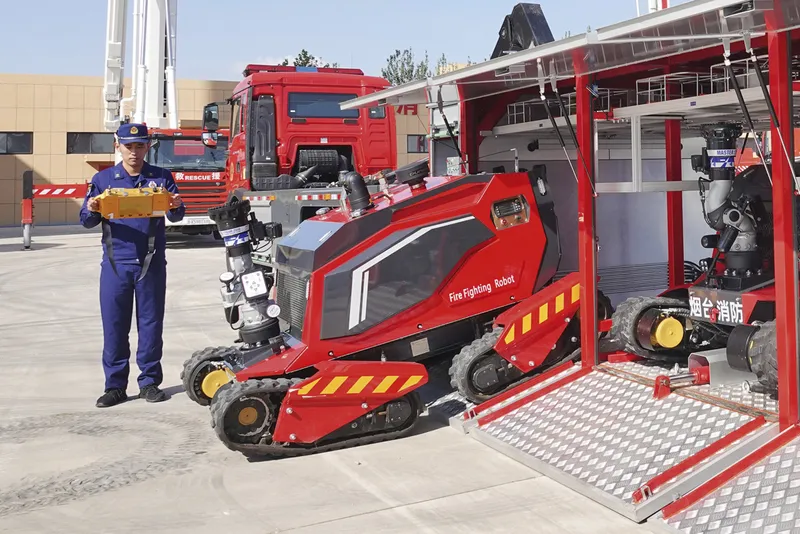
Here, at the Bajiao Fire Rescue Station, in Yantai, northeast China, a firefighter tests out a fire-fighting robot. For a few years now the Chinese government has been promoting the technology, which allows human firefighters to remain safely outside the danger zone of a blaze while controlling robot extinguishers.
Back in 2020, the city of Tongliao, in northern China, unveiled its brigade of firefighting machines. Known as ‘Blade Formation’, the 10-strong unit includes robots, drones and a transport unit. Elsewhere, ground-based robot firefighters are employed to extinguish fires at chemical plants and in subways.
One major advantage of this approach is fire resistance – robots can work at temperatures of 1,000°C (1,800°F) for over 30mins. They can also use sensors to detect heat sources, tricky terrain and combustible gases.
One day, they could even replace home fire alarms and fire extinguishers. In 2022, Chinese researchers published a paper describing small, lightweight “home-use fire-fighting robots”.
Going underground
Team Explorer, Carnegie Mellon University & Oregon State University
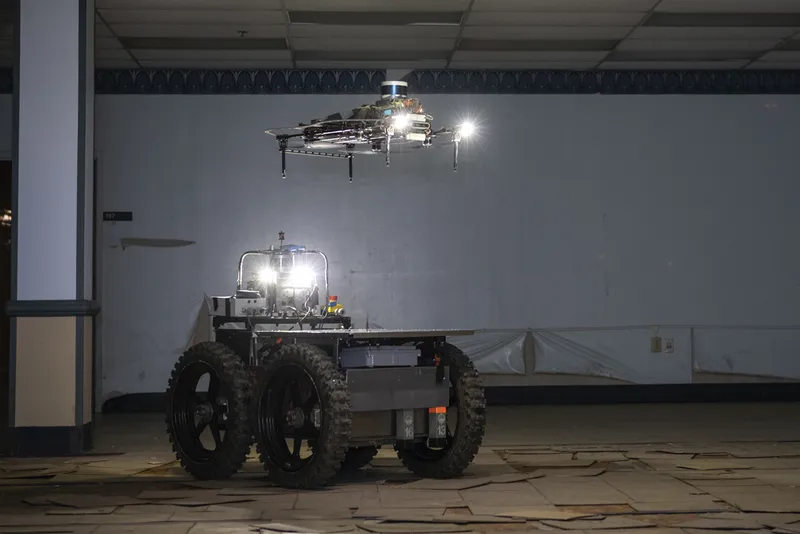
Searching for people trapped in dark underground tunnel and cavern complexes isn’t most people’s idea of fun, but in 2017 the US Defence Advanced Research Projects Agency (DARPA) turned it into a game. The survivors may not have been real, but the giant subterranean spaces were.
Players were tasked with developing and using autonomous robotic systems to seek out mannequins and other objects in order to score points. DARPA devised the competition to drive innovation in autonomous subterranean mapping and navigation, which could benefit rescue workers working after mine collapses and in cave rescue operations.
Following several rounds of competition, the finals of the ‘SubT’ challenge took place in 2021 at the Louisville Mega Cavern in Kentucky. Pictured here is a ground robot and drone entered by Team Explorer, from Carnegie Mellon University and Oregon State University, which made it through to the finals.
Although Team Explorer didn’t scoop the $2 million (about £1.6m) top prize, its robots did map more of the underground course than any other team. And the success of its aerial tech inspired the establishment of Canary Aero, a company that makes drones for mapping mines and inspecting infrastructure.
Read more:
- In the future, you'll share your work with robots... unless you're a woman
- Will there ever be a robot that does all the housework?
- Why there won't be a robot uprising any time soon
Let your legs do the work
Multilegged matter transport, Georgia Institute of Technology
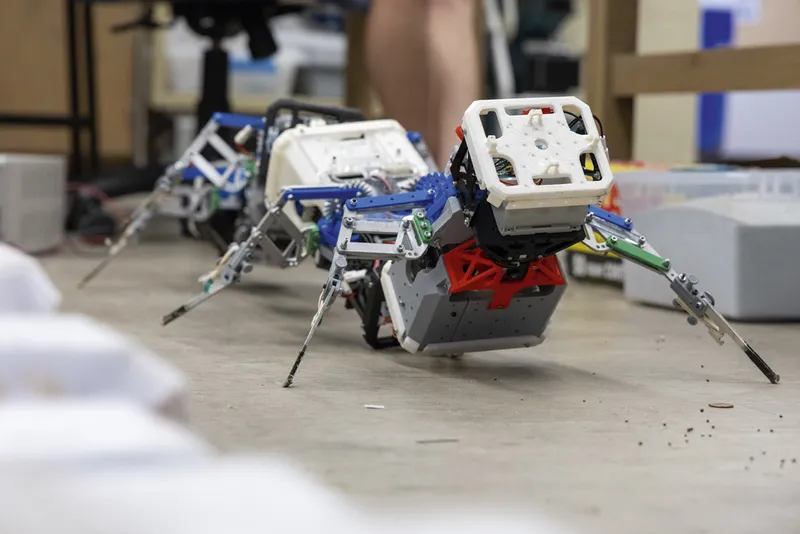
In an article published in Science in 2023, researchers at the Georgia Institute of Technology explained that “serially connected legged robots leads to reliable transport on [tricky] terrain without requiring sensing and control”. Or to put it another way: a robot based on a centipede doesn’t need eyes – a surprising fact that’s reflected in nature, for some species of centipedes, at least.
And although the centipede-like robot pictured here doesn’t quite have the same number of limbs as the arthropod that inspired its creators, models sporting up to 18 legs have been tested.
According to the paper’s authors, such sensor-free tech can reduce costs and may have an advantage in rapidly changing environments where there is no time for a controller to respond to information detected by the robot about its surroundings.
Mine sweeper
Proteus, Tethys Robotics
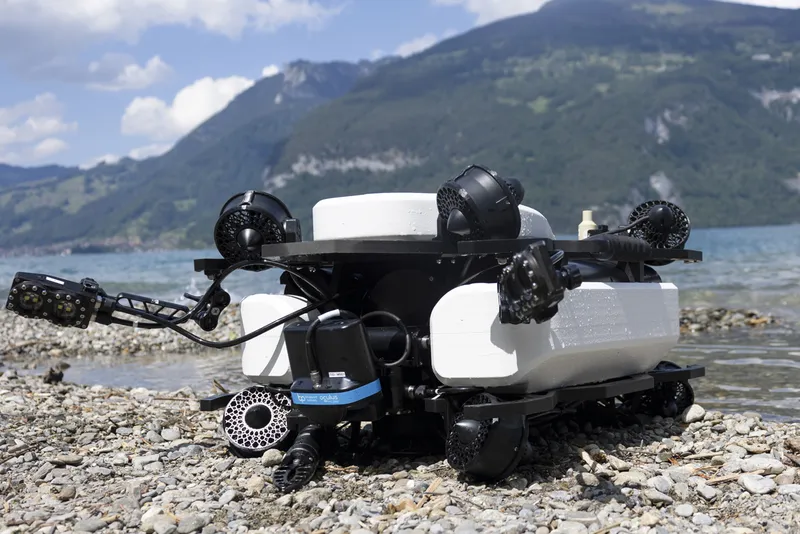
Divers from the Swiss armed forces return to shore with their Proteus robot following a successful test. Developed for search, recovery, inspection and surveillance through a collaboration between Tethys Robotics and the Swiss Drone and Robotics Centre of armasuisse Science + Technology, the Proteus prototype was given to explosives disposal experts in 2022 to test its ability to detect metallic ammunition.
According to Tethys CEO Jonas Wüst, the murky and turbulent environment of the ocean poses the biggest challenge for this robot. “In order to work under these conditions, innovative software solutions have been developed that enable the robot to perceive the environment and act accordingly,” he says.
Currently, the robot performs its tasks at the end of a tether, using AI-powered perception to position itself at depths beneath 300m (985ft). However, Tethys is developing fully automated and untethered robots that, Wüst notes, need to be advanced enough to match the expertise of human divers in the unpredictable conditions found in the deep ocean.
Snake eyes
Modular snake robot, Biorobotics LAB
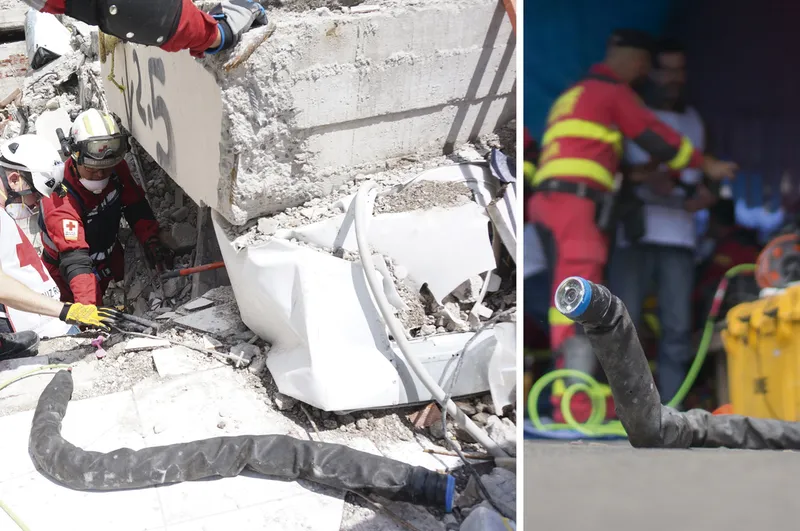
When an earthquake hit Mexico City in 2017, the Mexican Red Cross asked researchers from the Biorobotics Lab at Carnegie Mellon University to deploy their snake robot to search for survivors amid the rubble.
Although the serpentine bot didn’t find any people, it was able to demonstrate the utility of robots modelled on snakes by providing a live feed from within the wreckage to help rescue teams. Since then, the Biorobotics Lab has updated the robot’s software, made its user interface more intuitive and developed a swimming robot with a similar design.
Prof Howie Choset, co-director of the lab, explains that his team bases its robots on snakes because they can slip through tiny spaces and reach locations that people and other machines can’t. “This is important in search and rescue when time isn’t on your side and you want to locate victims as quickly as possible and without disturbing what is likely a fragile environment,” he says.
Read more:
- Future technology: 22 ideas about to change our world
- 44 cool gadgets: Our pick of the best new tech
Inspector gadget
ANYmal, ANYbotics
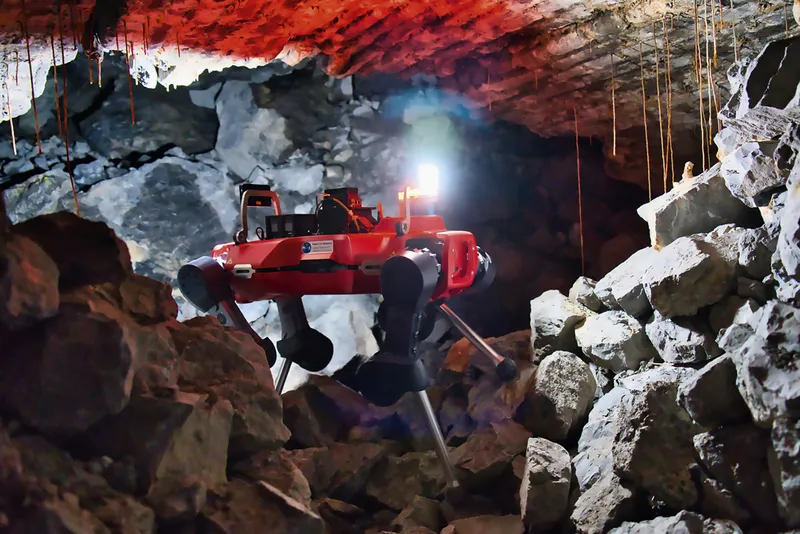
ANYmal is a four-legged robot devised to carry out autonomous inspections at industrial facilities. It’s the successor of several generations of legged robots from the Swiss Federal Institute of Technology in Zürich and its spin-off company ANYbotics.
Chemical producer BASF has tested the most up-to-date ANYmal at its plant in Ludwigshafen, Germany, where it was used to check the state of equipment while navigating its way around the site. ANYmals are also designed for use in power and renewable energy plants or oil and gas refineries, where they can collect data in places that might be dangerous for people to reach.
These robots have the potential to be adapted for search-and-rescue missions, even though those applications pose extra challenges, as ANYbotics’ senior director of marketing communications, Tilman Eberle, acknowledges: “These uses require additional sensors and navigation skills that are in development.”
But he also goes on to say that “ANYmal can already master extremely tough terrain and unstructured environments in a research context.”
Lightning swarm
Lightning Bug bot, MIT
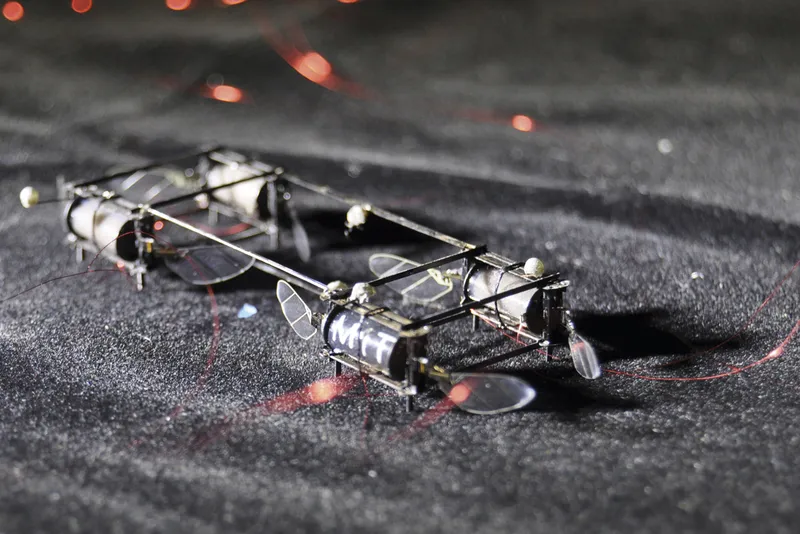
Inspired by fireflies, these ‘lightning bug’ robots are almost as small as their real-life counterparts, and can glow in various colours.
The soft, muscle-mimicking materials that MIT scientists used to control the robots’ tiny wings can contract 400 times a second. This produces the lift required to enable the bot to fly, but also generates a strong electric field that activates luminescent particles embedded in the ‘muscles’, making them glow.
The scientists designed them with search-and-rescue operations in mind – they intend the bots to use their lights to signal to and track each other: a low-power communication strategy for a lightweight robot.
“We envision sending hundreds or more of these tiny robots into a disaster site, and having them collectively search for survivors,” says MIT robotics engineer Prof Kevin Chen. “Once a survivor is found, they’ll then pass the information out to the operators.”
The bots are currently tethered on tiny wires, but the researchers are working with other MIT teams to make miniature batteries and circuits so that the robots can fly untethered.
Caged bird
Rooster, Robotican
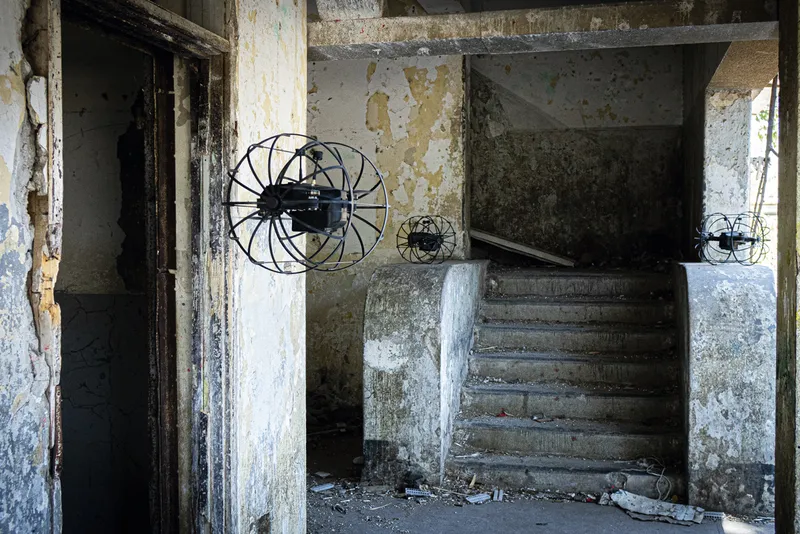
The Rooster is a slightly incongruous name for this reconnaissance robot from Israeli company Robotican, since, unlike its namesake, it is capable of flight. It might look like a drone in a birdcage but, thanks to its clever design, it’s as capable on the ground as it is in the air.
It can roll across surfaces or fly around to navigate almost any type of disaster site, manoeuvring through narrow passages and windows, or over obstacles and up or down staircases.
According to Robotican, the cage-like structure that forms the Rooster’s wheel is protective but also flexible, enabling it to handle different terrains. Designed to assist in search operations, the robot uses cameras and sensors to scan a space, so that rescuers don’t need to enter dangerous areas needlessly.
Rooster can also communicate with search teams and other robots via a mesh radio link – the same kind of communications system used by the US military for field operations. In a 2023 test exercise, Spanish armed forces used a Rooster to scan an enemy building.
Send in the dogs
Spot, Boston Dynamics
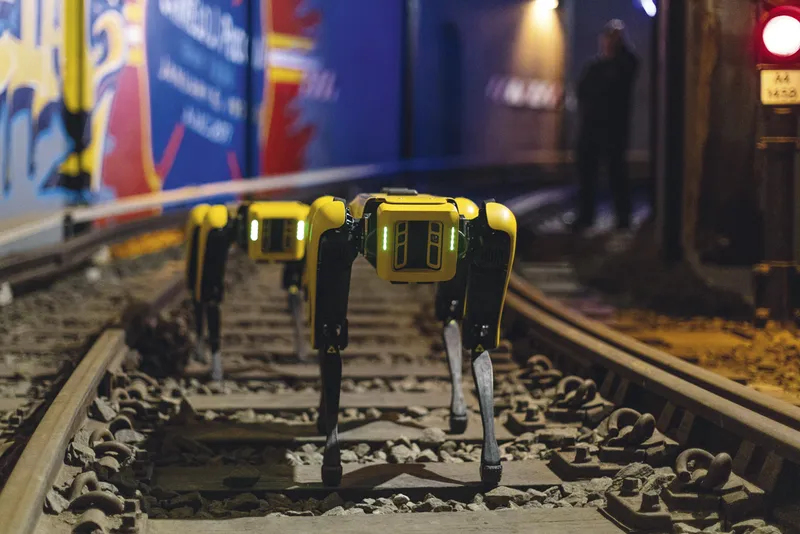
Over 1,000 of these yellow robots, dubbed Spot, are already patrolling factories and power plants. And now the New York City Fire Department is starting to use the dog-like devices for search-and-rescue missions. In April 2023, it was reported that a Spot had been sent in to survey the remains of a collapsed car park that was considered too unstable for fire crews to enter.
Developed by Boston Dynamics, a spin-off from the Massachusetts Institute of Technology (MIT), Spot can access places people can’t get to, send back video footage, identify hazards, carry up to 14kg (30lbs) and, when fitted with an add-on ‘arm’, open doors and flip switches.
Not everyone has been convinced of Spot’s suitability for work with the emergency services, however. In 2020, the New York City Police Department started testing Spot, but cancelled its arrangement with Boston Dynamics following a public backlash.
About our experts
Howie Choset is a professor of computer science at Carnegie Mellon University, where he manufactures robots. He also studies field and service robotics, human-robot collaboration, and medical robots. His work has been published in journals including IEEE Robotics and Automation Letters.
Kevin Chen is an assistant professor at the department of electrical engineering and computer science, at the Massachusetts Institute of Technology. His research has been published in journals including Science Robotics and the Journal of Fluid Mechanics.
Read more: